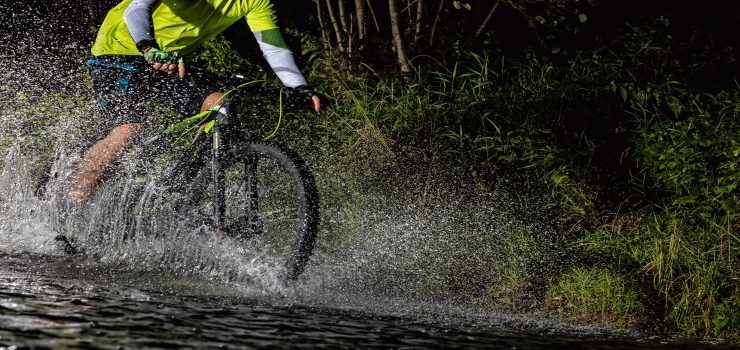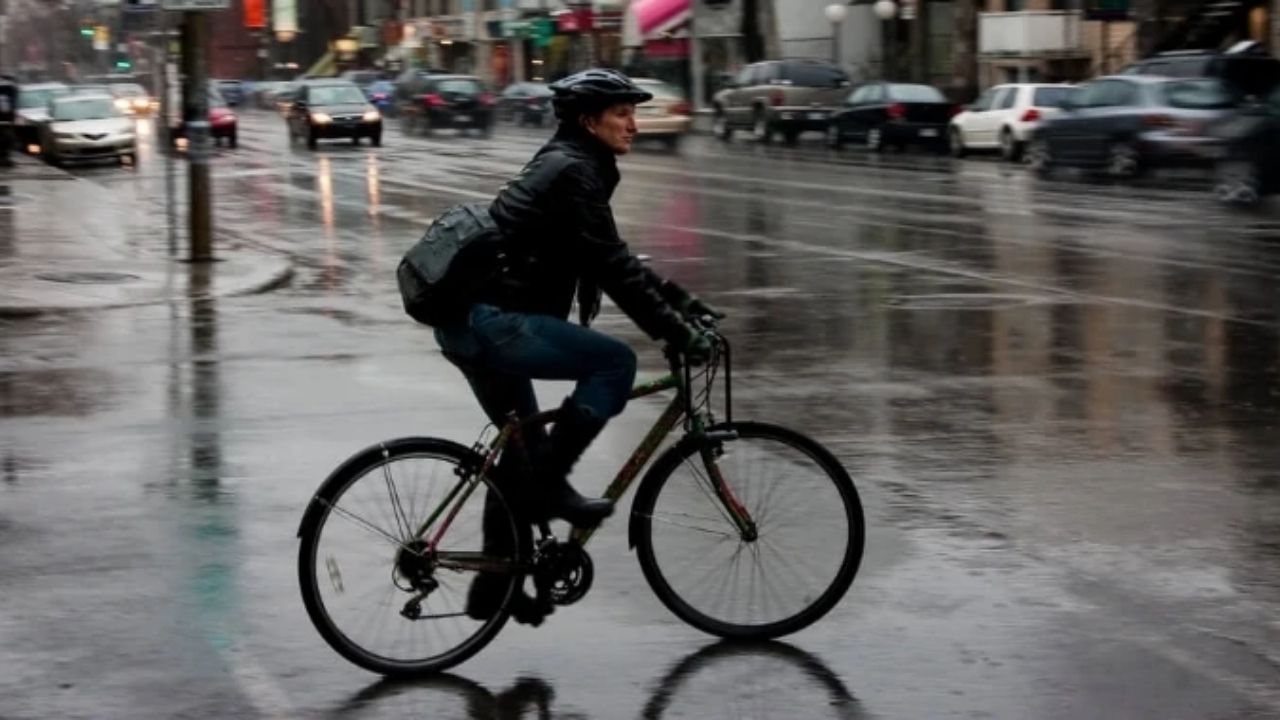As long as it’s not a raging thunderstorm, cycling in the rain can be fun, but you still have to worry about the dangers of cycling on slippery roads with reduced visibility. Fortunately, you can manage such hazards by wearing appropriate gear for the weather and taking necessary safety precautions.
Even if you aren’t a fan of cycling in the rain, you may find yourself stuck in it with no shelter in sight. In such a scenario, you must know how to handle yourself to guarantee your safety and that of other road users.
Here are some of our best tips for not only staying safe when cycling in the rain but also enjoying the experience.
Page Contents
Best Tips for Cycling in the Rain
Dress for the Occasion
If it’s the rainy season, always check the weather forecast before leaving your home. Even if the forecast doesn’t promise rain, play it safe by taking a high-quality rain jacket with you. A water-resistant rain jacket will keep you dry and warm while cycling in the rain.
Aside from a rain jacket, it also helps to have waterproof overshoes and gloves. The overshoes will stop your shoes and feet from getting wet, while the gloves will keep your hands warm and dry. The gloves will also give you a better grip. Consider also wearing cycling glasses to keep rainwater out of your eyes.

Be sure to also dress your bike for rainy days by installing splash guards and reflective strips. Splash guards will stop your bike tires from splashing your back or people behind you. The reflective strips will make you more visible to other motorists and other road users.
Stay Visible
Being able to see while cycling in the rain is just as important as being seen. Installing bike lights on the front of your bike lets you see what’s in front of you and also lets oncoming traffic see you clearly in low lighting conditions.
We also recommend installing bike lights on the back of your bike. That way, vehicles approaching you from behind will see you long before they reach you. Other safety measures include wearing reflective clothing and having reflective strips on your bike.
Avoid Slippery Surfaces
When it rains, sewers, painted lines, and manhole covers become very slippery. As such, it’s best to avoid these surfaces when riding in wet conditions. If there’s no alternative path, stay safe by maintaining a firm grip on your handlebars and riding perpendicularly on such portions of road.
Aside from railroad tracks and sewers, regular roads, paved and unpaved, also become slippery in the rain. If cycling soon after a rainfall, the safest portions of the road for your bike are the dry lines created by vehicles that have passed before you. These portions of the road are typically a lighter color than the rest and offer more traction.
Don’t Ride into Deep-Looking Puddles

If a puddle looks deep, avoid it or at least enter it gently. Riding blindly into such a puddle could lead to falling into a hole that’s deeper than expected and losing your balance. That’s the last thing you want, especially when riding on a busy road.
Take it Slow
Riding in the rain might be fun, but it’s no reason to throw caution to the wind. Wet roads mean your tires have less traction, which makes braking or taking sharp corners tricky. To be safe, take the road slowly and keep your wits about you at all times.
Avoid braking sharply. Instead, gradually slow down to prevent your front tires from washing out. It’s easier to do this if you aren’t going fast.
Lower Your Tire Pressure
As we’ve mentioned, wet roads and tires reduce traction. You can boost your traction in such conditions by reducing the air pressure in your tires. When slightly deflated to about 100 psi, your tires will have a better grip on wet roads.
It also helps if your tires are in good condition with at least 1mm of tread depth for optimal grip.
Know When to Stop
Not every rainy day is ideal for a car ride, much less a bike ride. Some rainy days are outright dangerous with winds so strong they can blow you right off the road. There’s also the risk of lightning or being swept away by a flood. Use common sense to judge when visibility is too low to ride or the conditions are just too dangerous to risk going for a ride.
In Summary
Riding in the rain can prove to be a fun challenge, especially when you are properly prepared for such an adventure. However, if you notice that the conditions outside aren’t worth the risk, it’s best to wait until the rain stops to take your bike out.
References
- Riding In The Rains: 10 Tips To Be Safe And Comfortable – TVS Motor
- 7 Tips for Biking in the Rain – Tri Right Coaching
